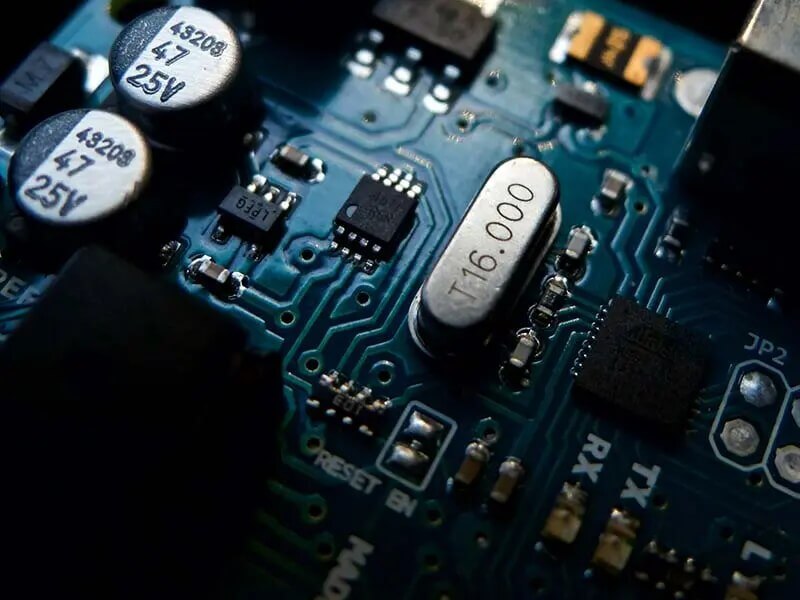- About us
- Product
- Dual-Junction Circulator
-

Dual-junction Microstrip Circulator
-

Dual-junction Drop-in Circulator
-

Dual-junction Coaxial Circulator
- Customized
- Technical Note
- News
- Contact us
NEWS
Updated on:
Keywords: Microwave circulators,RF isolators,Phased Array Radar,RF circulators, radar circulators
Autonomous vehicles now glide down highways under the precise guidance of mmWave radar, where high-isolation RF isolators and precision microwave circulators keep signals moving cleanly in one direction. Even MALE drones on remote border patrol rely on rugged RF isolators in their radar systems to eliminate echoes and maintain a rock-solid connection. In smart factories, laser cutters and robotic arms share real-time control commands through microwave circulators, coordinating high-speed cutting with sub-millimeter accuracy. Together with advanced Phased Array Radar antennas and RF front-end modules, these components define the new Radar Era—transforming vehicle safety, unmanned surveillance, and automated manufacturing around the world.
Latest market data shows orders for RF isolators, microwave circulators, and Phased Array Radar systems surged 22% year over year from 2023 to 2024[1]. This rapid growth is powered by surging demand in four main areas: automotive ADAS and self-driving cars; large-scale industrial automation; high-speed aerospace and satellite links; and multi-beam 5G/6G network beamforming. As radar technology advances, the critical role of efficient RF isolators, low-loss microwave circulators, and scalable Phased Array Radar setups has never been more apparent.
In the automotive sector, mmWave radars enabled by microwave circulators and RF isolators support collision avoidance, adaptive cruise control, and level-4 autonomous navigation. Leading OEMs pre-book production slots 12–18 months ahead to secure supply of RF isolators rated ≥30 dB isolation and microwave circulators with ≤0.5 dB insertion loss.
Smart factories and secure facilities leverage RF isolators and microwave circulators within radar-based monitoring networks. Whether tracking inventory in warehouses or scanning oil pipelines across deserts, Phased Array Radar systems deliver multi-beam scanning capabilities with high isolation and minimal interference.
From ground stations to satellite payloads, aerospace communications depend on microwave circulators and RF isolators to handle high frequencies in L-band, Ka-band, and emerging sub-THz applications. Phased Array Radar antennas on satellites enable dynamic beam steering without mechanical movement.
Emerging 5G/6G network architectures employ Phased Array Radar techniques in base stations to form multiple concurrent beams. These systems rely on arrays of microwave circulators and RF isolators to route signals, manage reflections, and maximize spectral efficiency.

At the heart of every non-reciprocal RF network, microwave circulators are three-port or four-port devices using magnetized ferrite substrates to route signals in one direction only. Complementary RF isolators protect sensitive receivers by absorbing reflected power. Key specifications include:
These technical advances allow both microwave circulators and RF isolators to transition from military-grade hardware into mainstream civilian and commercial applications, reinforcing signal integrity and reducing downtime.

Global shortages of nickel-iron ferrite cores and specialized polymer packages, combined with trade restrictions, pushed component prices up 8–12% YoY[1]. In response, major vendors are investing in automated production lines and relocating facilities to Southeast Asia, optimizing cost structures for RF isolators and microwave circulators.
Leading manufacturers in China, India, and Korea now produce high-isolation components (≥50 dB) certified to CE, FCC, and MIL-STD. Collaborative R&D efforts between European ferrite institutes and Asian packaging consortia are accelerating innovation in Phased Array Radar module design.
As telecommunications standards evolve toward 6G and beyond, and quantum sensing technologies mature, the next growth frontier will be in sub-THz (<100 GHz) and quantum-enhanced radar systems. Key trends include:
The Radar Era places RF isolators, microwave circulators, and Phased Array Radar technologies at the core of modern innovation—from autonomous vehicles and automated industry to advanced satellite networks and quantum radar research. To lead in this dynamic market, companies must build resilient supply chains, pursue continuous innovation, and maintain the highest standards of quality control.
Chengdu Hzbeat Electronic Technology Co., Ltd. is a national high-tech enterprise with 18 years of expertise in RF isolator and microwave circulator R&D and manufacturing. Covering 200 MHz to 100 GHz, HZBEAT delivers end-to-end solutions—from advanced material research and precision machining to rigorous testing—providing cost-effective microwave components to customers worldwide.
Learn more about our RF circulator OEM and microstrip circulator offerings →
About the Author
HzBeat Editorial Content Team
Sara is a Brand Specialist at Hzbeat, focusing on RF & microwave industry communications. She transforms complex technologies into accessible insights, helping global readers understand the value of circulators, isolators, and other key components.